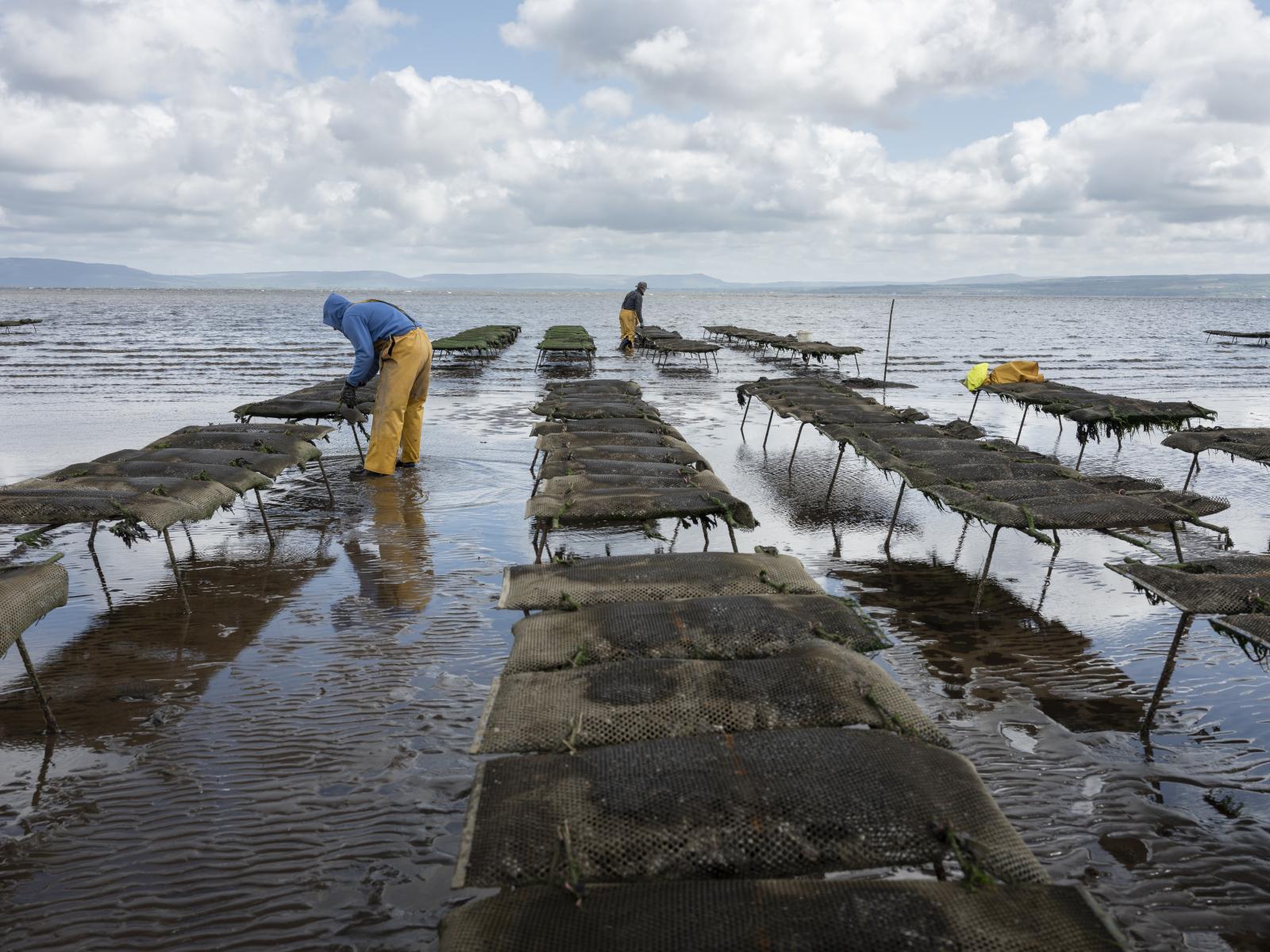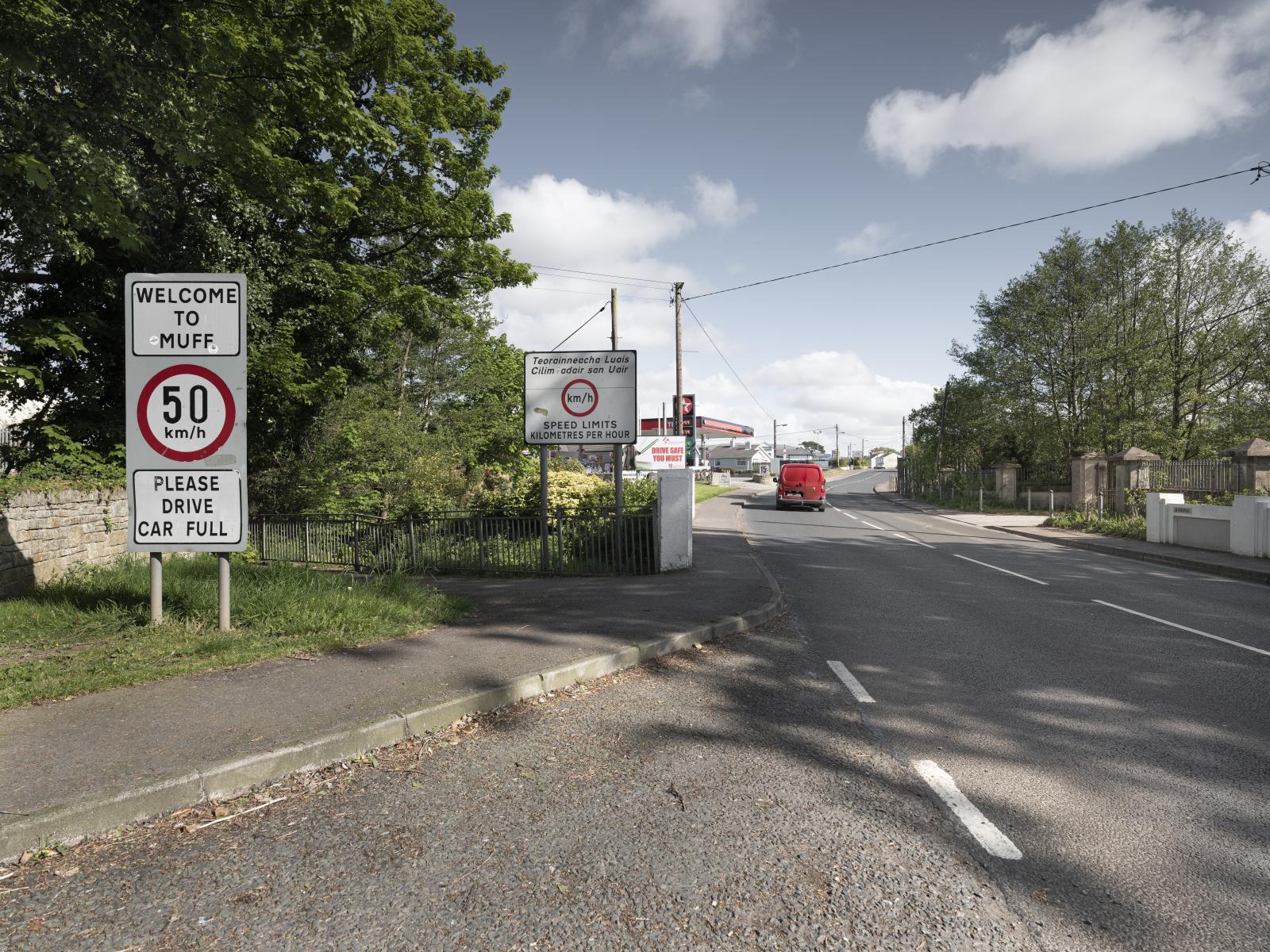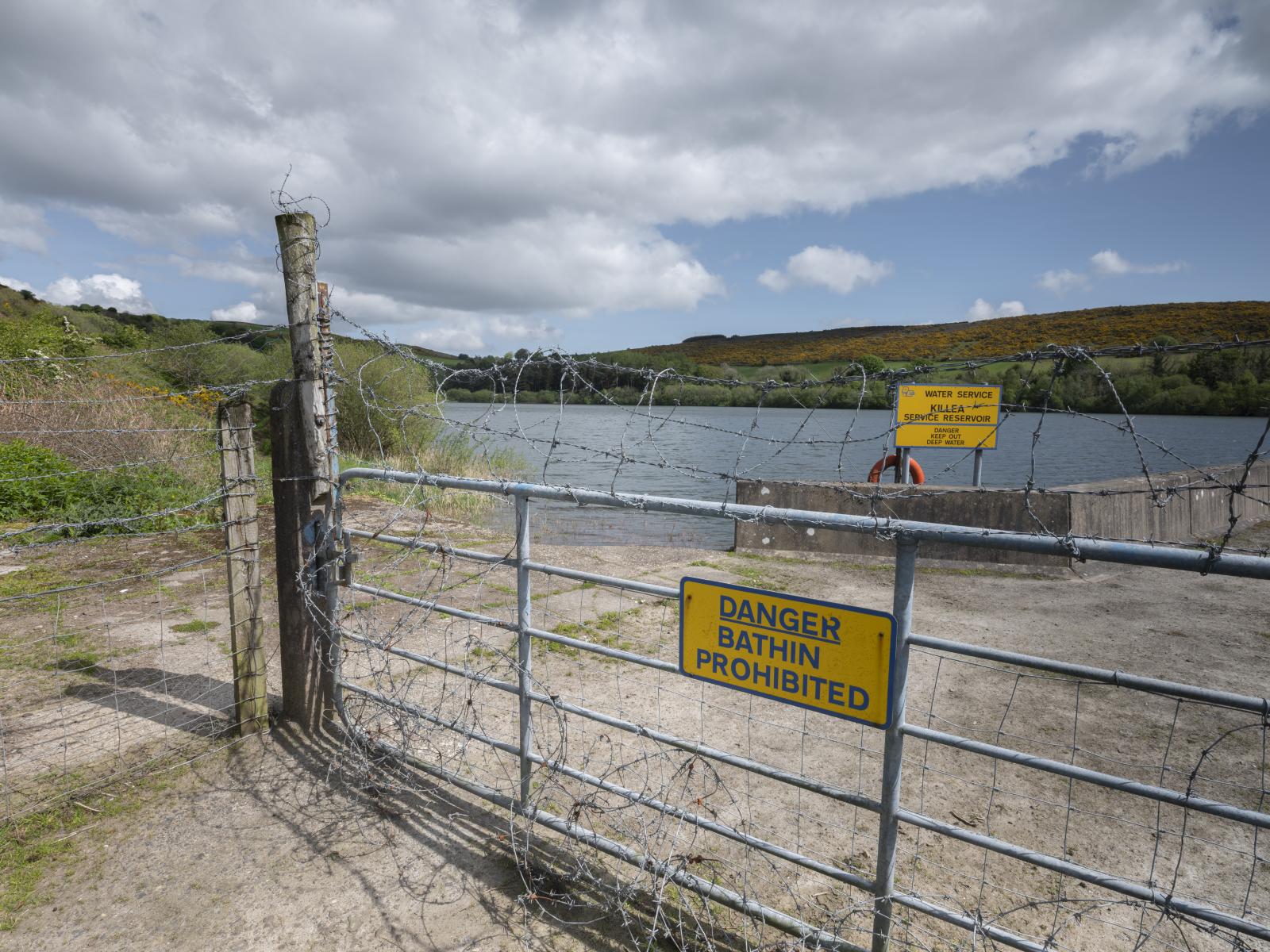Public Story
208 WAYS TO LEAVE THE EU
Three and a half years down the line, the Brexit project, fuelled essentially by UK right-wing party politics using migration as a divide and conquer strategy, remains stranded in the harbour. This historical political U-turn has shaken the very core of British democracy and its institutions. It has left businesses, UK and other EU citizens living abroad with an uncertain vision of the future.
Nurtured on half truths or, as some consider, flat out lies about the EU’s mandate and mission, 51.89% of the UK population - minus the 1.3 million British citizens residing in the 27 other EU member countries, who were excluded from vote - opted to leave the European project. A project that created a lasting stability for over 60 years and economic prosperity since the Second World War.
One cannot but wonder why David Cameron initiated this referendum. A referendum is generally considered a very unreliable democratic instrument, especially when it is virtually impossible for the general population to oversee the complexities and fully assess the consequences of rewinding more than 40 years of integrated cooperation on almost every socio-economical aspect of their nation and that of its European neighbours.
Brexit has become a promise of a golden age reminiscent of the former glory of the British Empire, without, it appears, a real concrete plan and risk assessment. In an increasingly interdependent world, will the much hoped for benefits offset the separation costs?
The Irish issue
Who would have imaged that the UK, while turning its back on the European project, would be bitten in the tail by its past imperial ambitions on the island of Ireland. The special status of Northern Ireland and its border with the Republic of Ireland emerged as the main stumbling block on reaching a new deal both under Theresa May and Boris Johnson. Maintaining the much longed for peace on the island - brought about by the Good Friday Agreement - and securing the livelihood of Irish and UK citizens on the island of Ireland, versus UK’s total independence from the world’s largest trading block, are the main issues in the balance.
The Good Friday Agreement, a de facto peace deal signed in 1998 between the British and Irish governments established a new form of power sharing in Northern Ireland between the Nationalists such as Sinn Féin and the UK-oriented Unionists such as the Democratic Unionist Party (DUP). President Bill Clinton, Senator George Mitchell, British Prime Minister Tony Blair and Bertie Ahern, the Republic of Ireland's Taoiseach[1] brokered this political arrangement that brought an end to 30 years of violence and human rights violations. Ironically, the UK’s membership of the EU was in part instrumental in ending the Troubles.
This deal, also known as the Belfast Agreement, stipulates that Northern Ireland remains part of Britain until a majority of its citizens vote otherwise. The legal texts also called for a complete disarmament of the IRA and Loyalist paramilitaries. However, splinter groups such as the New IRA sporadically engage in acts of violence against, what they call, an unlawful occupation of Northern Ireland by the UK. On 23 April 2019, a bullet killed journalist Lyra McKee while she was observing rioting in Derry/Londonderry’s Creggan estate. It was encouraging to see that this act was overwhelmingly condemned by the general public and politicians on both sides of the political divide. Sectarian divisions are still alive in some form or other - the peace wall in Belfast is a stark reminder of the fragile peace. Communities continue to rebuild shattered neighbourhoods with local initiatives set up over the years to deal with long-standing trauma and to bridge the different communities engaging both youth and the older generations.
Between 1998 and 2008, “cross-border” trade flourished between the two Irelands while all signs of an actual border faded into a distant past. North and South traded successfully and their economic development grew with the help of EU development schemes. Then the financial crisis of 2008 hit the Irish economy hard. The downturn impacted the fragile Northern Irish economy even harder. Northern Ireland has little in the way of manufacturing. Public sector jobs, previously employing a significant percentage of the population, are on the decline with 19,700 fewer public sector jobs compared to the peak in September 2009 as benefits schemes are overhauled and centralised in other parts of the UK. The BBC reported in 2019 that the economic inactivity rate in Northern Ireland remains the highest of any UK region at 26.4%. As for Northern Irish farmers, many rely heavily the generous EU agricultural subsidies. According to DetailData (nicva) more than 38,000 farmers and rural projects across Northern Ireland shared nearly £350million of European Union (EU) funding in a single year. This funding risks disappearing post-Brexit.
October 2019 saw a new way out of the impasse with the EU willing to drop the Irish backstop and Mr Johnson open to the idea of a special customs status for Northern Ireland with a customs border in the Irish Sea. This new deal would protect the EU27 single market, the sanctity of the Good Friday Agreement and the UK customs union. For the deal to be accepted by the UK, Mr Johnson, like Mrs May, is dependent on the DUP’s vote.
Besides the countless remaining uncertainties about how politically, administratively, legally and logistically business and the daily lives of the population can be safeguarded post-Brexit, the DUP remains uncompromisingly opposed to the very notion of a special status for Northern Ireland within the UK “for the sake of protecting the Union”, while keeping an open land border that will potentially threaten the EU single market. Will the Party, known for its intransigent stance again unfold and recycle their “Ulster Says No” banner[2] and fly it in Westminster? Or, will they yield to the promise of significant UK capital investments in Northern Ireland? The fact is, that the pro-Brexit DUP is actually - although they suggest otherwise - not representing the will of Northern Ireland as a whole. The results of the referendum in Northern Ireland were unequivocal with 56% opting to remain in the EU.
While there is still uncertainty whether an EU extension will actually help the ratification process of this new deal – amendments and all - into UK law, the possibility of a second referendum or even a new UK election still remains on the table.
“But in what country have we been?”[3]
In May 2019, photographer and photojournalist Michel Petillo travelled the full length of the 500 KM long Irish border. Over a period of 2 weeks he travelled close to1800 km criss-crossing the border, starting in the north-west at Lough Foyle and heading to the south-east of the Island, eventually reaching the shores of the Irish Sea. He met with the locals, listened to their stories on the Troubles and their views on Brexit, while taking in the reality of the terrain. He learned that people identifying themselves as being Irish on both sides of the virtual Irish border, consider NI and the Republic as two hands of the same body. They believe that they have more in common than would separate them.
"Where are you from, Pat? The North or South?
Pat: “Yes" [4]
The border is made up of streams, rivers, small stone bridges and country roads. It cuts through water reservoirs, forest, fields, towns, farmland, houses, families, businesses and trade. From the 208 official border crossings, about eight are considered as main or national road crossings - one motorway runs north to south between Dublin and Belfast. Besides the speed signs in KM or Mph, the quality of tarmac, a small stone bridge, or the occasional abandoned customs house, a silent witness to a divided past, there are no official border trappings. Spotting the border proved to be no easy feat. Border crossings could be as little as a couple of metres apart and sometimes found in a cascaded south-north-south-north arrangement such is the case around towns like Clones, Belleek and Pettigo. Most of the time it all became a geographical blur, no longer knowing what country he was in.
Michel started off his journey in Derry/Londonderry. About 15 official border-crossings are situated around this formerly thriving trade hub for textile and whiskey. With access to the River Foyle, Lough Foyle and the North Channel connecting the Atlantic and the Irish Sea, the textile industry reached its peak in the 1920s, employing around 18,000 people. Following the Partition, the local economy took a hit and never really recovered. And history wouldn’t be history if it wouldn’t repeat itself. Foylemore Oysters founded by William Lynch over 30 years ago, faces severe financial pressures over a hard border. The geographical location of oyster fields, force William and his crew to cross the border several times a day. Before exporting the final product internationally, William ships his oysters to France where he runs a purification plant. With his quality product in high demand all over the world, he fears Brexit - hard border or no hard border - will do him no favours in securing his legacy - a business that he wishes to see continued by his sons. Although the UK claims Lough Foyle to be British, this matter has yet to be fully settled with the Republic contesting British ownership since 1922. Is this a prelude to more border idiosyncrasies that will divide public opinion in the future? William is just one of the many business owners who fear for their economic survival. It is believed that Brexit would have a devastating impact on the Northern Irish economy with business and farms closing down as EU subsidies evaporate and the NI-UK-EU-trade becoming to costly due to complications over import-export tariffs, value added tax and the value of the Pound.
"There are no more bandits, just cowboys” [5]
During the Troubles, British troops would spike or blow up border roads. Smuggling became a profitable side-business. Business owners along the border today will tell you with no hesitation, that smuggling and its related crime would see a revival following Brexit. Farmers who needed to get on with their day-to-day work, created unauthorised roads with their tractors, in order to facilitate access to their fields and cattle in the cross-border region, avoiding long detours - up to 15 miles in some cases - or facing lengthy delays at checkpoints. Every farmer or trader has a story to tell about the ‘border-bustlers’ - the men and women from every corner of Ireland who joined the struggle to keep the border crossings open with bulldozers during the Troubles. The prospect of a controlled land border “would bring out those bulldozers” once again.
"They should leave it alone.”[6]
The occupation of Ireland that sparked off the Troubles is still very much part of Irish collective memory and the fear of its resurgence following a tangible hard border is of real concern to the population and all political parties involved, including the EU.Visiting the island, experiencing the reality of the terrain, makes one realise very quickly that not only does the geography of the country and its road infrastructure, but also its violent history, its fragile economy and national identity hijack the very idea of a physical controlled land border. The Brexit negotiations gravitated around these very notions, putting the Good Friday Agreement at the very centre of a political conundrum that needs yet to reach its conclusion.
In extremis, one could argue that politics could compromise over prosperity, the location of a customs border, or even the way the EU single market could be protected. Matters directly related to the Good Friday Agreement, national identity and past trauma, realistically, can only be taken into account either fully or rejected entirely as no give and take would ever be sufficient to assure the status quo on something that is both intangible and invaluable.
It will be finally up to future generations to judge whether the UK was on the wrong side of history or whether it heralded to the end of the EU, the United Kingdom and Northern Ireland, as we know it.
Foot notes:
[1]Prime Minister of the Republic of Ireland
[2]The Ulster Says No campaign was led by Democratic Unionist Party leader Ian Paisley in protest of the provisions of the 1985 Anglo-Irish Agreement which gave the government of the Republic of Ireland an advisory role in the governance of Northern Ireland.
[3] John Montague - Irish poet.
[4] Pat O’Brien, 63 years of age who runs a second had bicycle repair-shop on the border in Co. Cavan.
[5] Lady at the counter of a small grocery shop in Forkhill, C. Armagh also know as bandit country.
[6] 94-year-old Henry Kavanagh, owner of the Fearons pub in Rostrevor on leaving the EU.
























